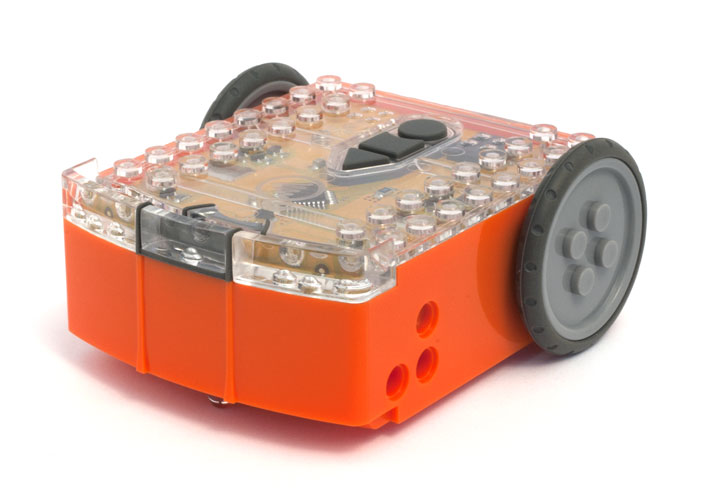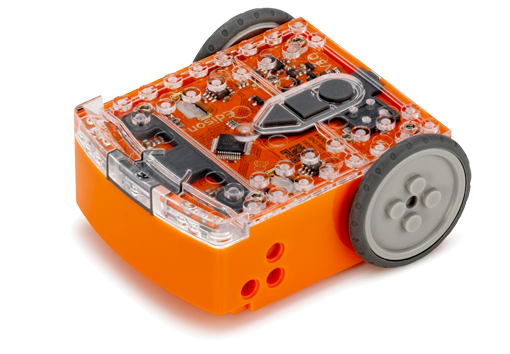Your Edventure into Robotics
10 Robotics Lesson plans

Contents
Summary
These lessons have been designed and tested in workshops held by Robotics WPS over the past five years using a variety of robots. They have now been tested with the Edison robot and have proven to be very successful.
Lesson plan overview
Most lessons have been designed to be completed in 90 minutes; however this will vary based on a student’s age and ability. All lesson plans have been linked to the Australian curriculum.
Relevance to NAPLAN testing (Australian national student testing)
Students find robotics highly engaging which assists in rapid learning in areas such as science, technology, engineering and maths (STEM). However there are other educational elements can be leveraged from this high level of engagement
LESSON 1: Get familiar and set up
Students familiarize themselves with the programming environment and how to download a program to the robot.
Lesson 1 Worksheet 1.1 – Meet Edison
Lesson 1 Worksheet 1.2 – Barcode programming
Lesson 1 Worksheet 1.3 – Meet EdWare
Lesson 1 Worksheet 1.4 – Downloading a test program
LESSON 2: Robot movement – driving
Introduction to sequential programming – Students learn how the robot responds to command icons in sequence and bring together the concepts of time, speed, and distance.
Lesson 2 Worksheet 2.1 – Drive the robot forward
Lesson 2 Worksheet 2.2 – Drive the robot backward
Lesson 2 Worksheet 2.3 – Forward and then backward
Lesson 2 Worksheet 2.4 – Speed play
LESSON 3: Robot movement – turning
Sequential programming and basic geometry – Students learn how the robot responds to time and geometry and how they can achieve driving control of the robot.
Lesson 3 Worksheet 3.1 – Right turn 90 degrees
Lesson 3 Worksheet 3.2 – Left turn 180 degrees
Lesson 3 Worksheet 3.3 – Right turn, then left turn
Lesson 3 Worksheet 3.4 – Mini maze
LESSON 4: Maze challenge and Mexican wave
Reinforce learning – Students use knowledge from lessons 1 through 3 to achieve two fun open-ended activities.
Lesson 4 Worksheet 4.1 – Challenge
Lesson 4 Worksheet 4.2 – Mexican wave
Lesson 5: Design brief 1 – My program
Creative thinking and problem solving – Students come up with their own challenge and conceptualize how the robot can provide a solution. This may take two lesson periods; alternatively, this can be a homework exercise.
Lesson 5 Design brief worksheet 5.1 – My program
Lesson 5 Design brief worksheet 5.2 – My program
Lesson 6: Clap sensing
Introduction to inputs (sensors) – Students learn how to make the robot respond to outside stimulus (claps).
Lesson 6 Worksheet 6.1 – Flash LED in response to clap
Lesson 6 Worksheet 6.2 – Drive in response to a clap
Lesson 6 Worksheet 6.3 – Dance in response to clapping
Lesson 7: Detect obstacles
Introduction to the concept of obstacle detection and artificial intelligence – Students program the robot to make decisions (artificial intelligence) in response to obstacles in the robot’s environment.
Calibrate obstacle detection
Lesson 7 Worksheet 7.1 – Infrared obstacle detection
Lesson 7 Worksheet 7.2 – Detect obstacle and stop
Lesson 7 Worksheet 7.3 – Detect obstacle and avoid
Lesson 7 Worksheet 7.4 – Obstacle avoidance
Lesson 7 Worksheet 7.5 – Right and left detection
Lesson 8: Line sensing and tracking
Industrial like robotic behavior – Students learn about basic robot sensing and control similar to that used in advanced automated factories and warehouses.
Lesson 8 Worksheet 8.1 – Line tracking sensor
Lesson 8 Worksheet 8.2 – Drive until a black line
Lesson 8 Worksheet 8.3 – Drive inside a border
Lesson 8 Worksheet 8.4 – Follow a line
Lesson 9: Respond to light
Environmental measurement and programming mathematics – Students learn about measuring light levels, storing them in memory and performing mathematics to control the robots behavior.
Lesson 9 Worksheet 9.1 – Understanding variables
Lesson 9 Worksheet 9.2 – Light alarm
Lesson 9 Worksheet 9.3 – Automatic lights
Lesson 9 Worksheet 9.4 – Light following
Lesson 10: Design brief 2 – My program
Creative thinking and problem solving – This is the second design brief where students come up with their own challenge and conceptualize how the robot can provide a solution This may take two or more lesson periods of 90 minutes
Lesson 10 Design brief worksheet 10.1 – My program
Lesson 10 Design brief worksheet 10.2 – My program

